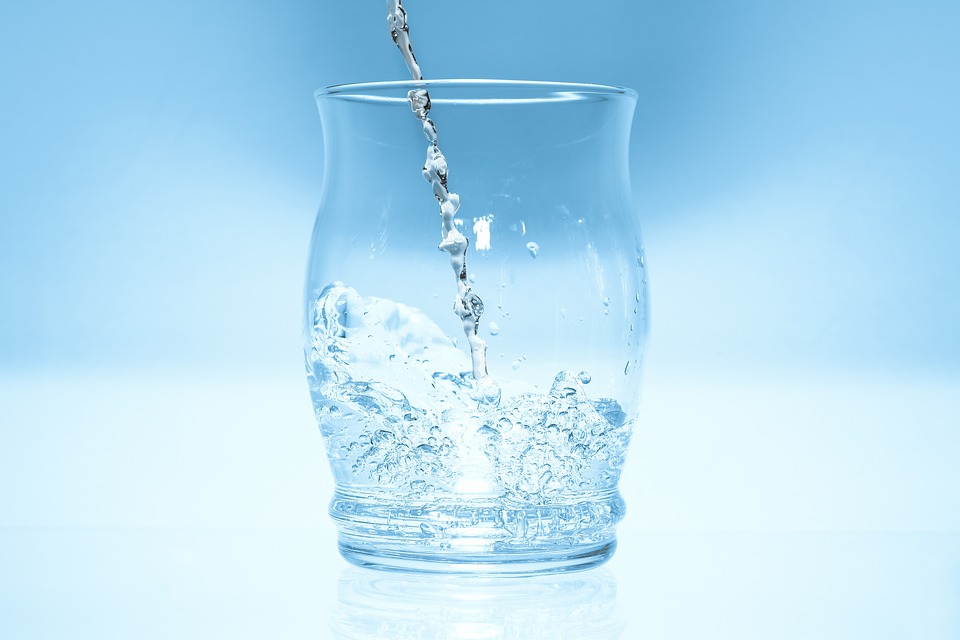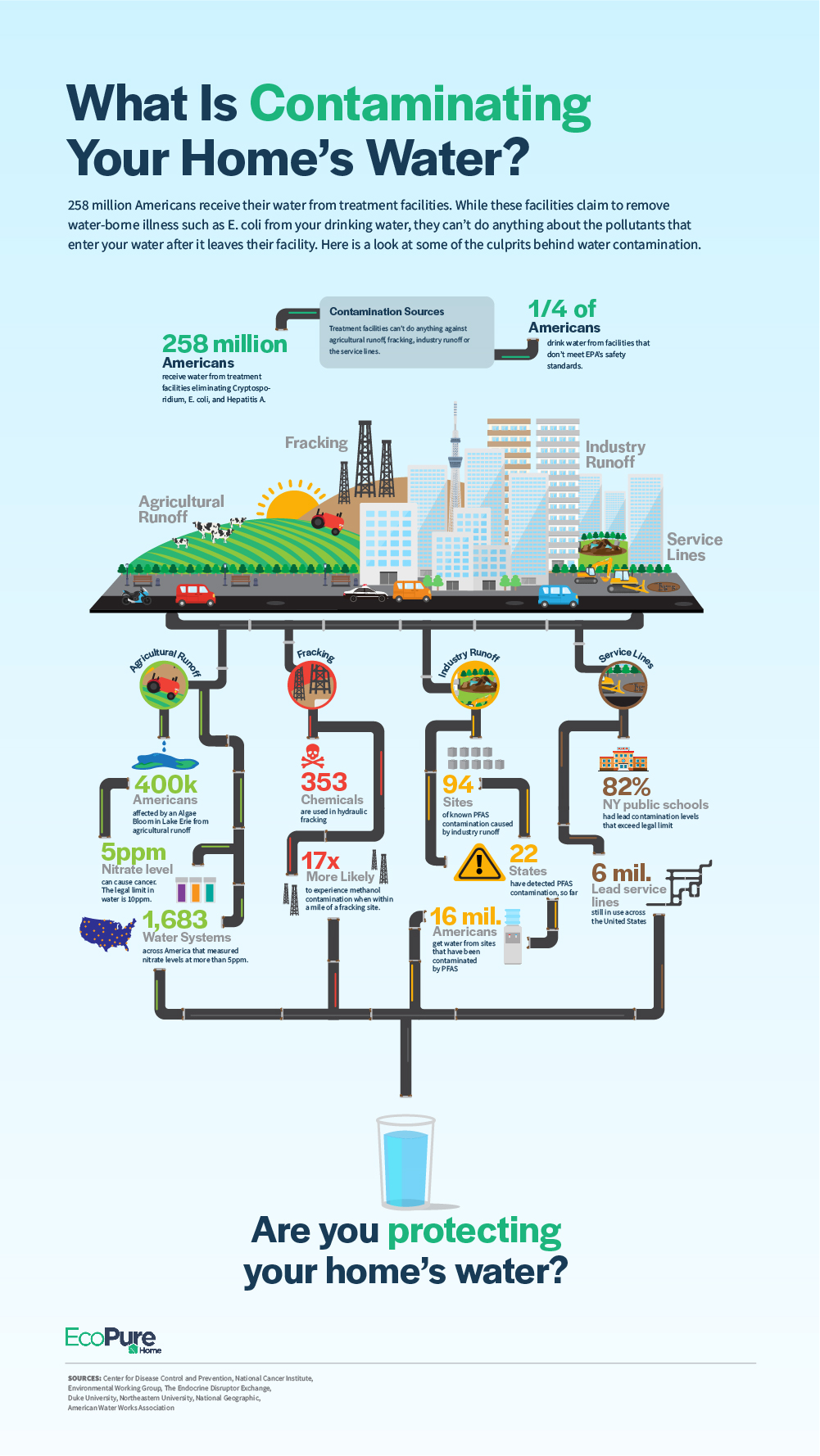
The threat of water contamination is all around us. While nearly 80 percent of the United States population should feel confident about the water coming from treatment facilities, it’s not always guaranteed to arrive at our homes in a safe condition.
External factors such as agricultural runoff, fracking, industry pollution and old lead service lines are leaching harmful chemicals and bacteria into the water after it leaves the treatment facilities. Combating this problem starts by understanding the risk potential of your home.
- Agricultural Runoff: Common fertilizers used on farms across the country are raising the levels of nitrates to harmful proportions.
- Fracking: With the fracking industry booming, so is the spread of chemicals to our water sources. Water treatment facilities aren’t equipped to combat these chemicals.
- Industry Pollution: PFAS are chemicals leaching into our soil from industry runoff. These “forever chemicals” have been found in 94 separate sites across the country.
- Lead Service Lines: Six million water service lines across the country still contain an unsafe level of lead. These service lines are contaminating water after it leaves the treatment facilities.
Whether you live in a rural area, growing suburb or busy metropolis, understanding the water contamination threats in your community can help you find the best solution (See A Comprehensive Guide to Common Water Contaminants for more info). Here’s a deeper look into how contaminants are reaching your water.

You may also like
Viable Earth-Friendly Alternatives to Bottled Water
Why Water Bottles Hurt You and The Earth [Infographic]
